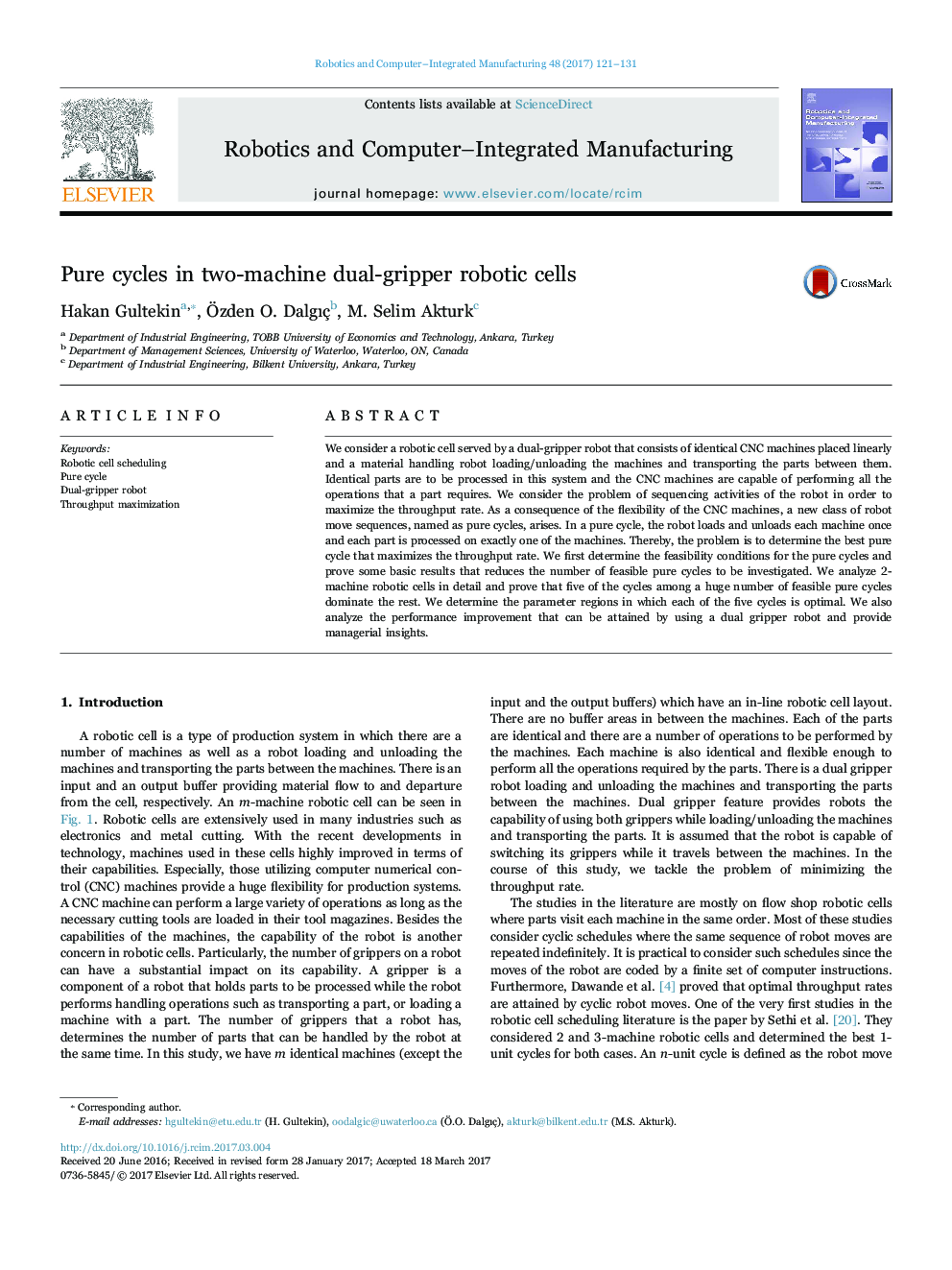| Article ID | Journal | Published Year | Pages | File Type |
|---|---|---|---|---|
| 4949030 | Robotics and Computer-Integrated Manufacturing | 2017 | 11 Pages |
Abstract
We consider a robotic cell served by a dual-gripper robot that consists of identical CNC machines placed linearly and a material handling robot loading/unloading the machines and transporting the parts between them. Identical parts are to be processed in this system and the CNC machines are capable of performing all the operations that a part requires. We consider the problem of sequencing activities of the robot in order to maximize the throughput rate. As a consequence of the flexibility of the CNC machines, a new class of robot move sequences, named as pure cycles, arises. In a pure cycle, the robot loads and unloads each machine once and each part is processed on exactly one of the machines. Thereby, the problem is to determine the best pure cycle that maximizes the throughput rate. We first determine the feasibility conditions for the pure cycles and prove some basic results that reduces the number of feasible pure cycles to be investigated. We analyze 2-machine robotic cells in detail and prove that five of the cycles among a huge number of feasible pure cycles dominate the rest. We determine the parameter regions in which each of the five cycles is optimal. We also analyze the performance improvement that can be attained by using a dual gripper robot and provide managerial insights.
Keywords
Related Topics
Physical Sciences and Engineering
Computer Science
Artificial Intelligence
Authors
Hakan Gultekin, Ãzden O. Dalgıç, M. Selim Akturk,
